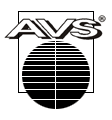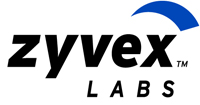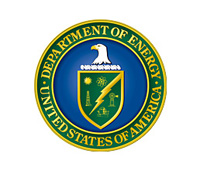

 EIPBN 2010
EIPBN 2010
 Registration
Registration
 Call for Papers
Call for Papers
 Sponsors & Affiliates
Sponsors & Affiliates
 About EIPBN
About EIPBN
 Sister Conferences
Sister Conferences
 Conference Archives
Conference Archives
 About Nano- Patterning
About Nano- Patterning
 Micrograph Contest
Micrograph Contest
 Contact Us
Contact Us
Plenary Speakers
“LaserFest 2010: 50 Years of the Light Fantastic”
Prof. Tony Siegman
Stanford University

Anthony E. Siegman was born in 1931, received degrees from Harvard, UCLA and Stanford University, and retired from a four-decade-long career as a Stanford faculty member in Electrical Engineering and Applied Physics at the end of 1998.
During his career he made many contributions to microwave and quantum electronics, laser physics and devices, and optics including 40 PhD dissertations, 250 scientific articles, and three books including a widely used text on LASERS
He was elected to both the National Academy of Engineering and National Academy of Sciences and received the Wood Prize and Ives Medal from the Optical Society of America, the Quantum Electronics Award from IEEE LEOS, and the Schawlow Medal from the Laser Institute of America. He consulted for numerous companies and government agencies and was a member of Air Force Scientific Advisory Board from 1974 to 1980.
Following retirement he served as President of the Optical Society of America during 1999, and is currently engaged in optics research and writing and technical and legal consulting.
“Molecular Printing: A Chemist’s Approach to a Desk Top Fab”
Prof. Chad Mirkin
Northwestern University
 Dr. Chad A. Mirkin is the Director of the International Institute for Nanotechnology, the George B. Rathmann Professor of Chemistry, Professor of Chemical and Biological Engineering, Professor of Biomedical Engineering, Professor of Materials Science & Engineering, and Professor of Medicine.
Dr. Chad A. Mirkin is the Director of the International Institute for Nanotechnology, the George B. Rathmann Professor of Chemistry, Professor of Chemical and Biological Engineering, Professor of Biomedical Engineering, Professor of Materials Science & Engineering, and Professor of Medicine.
Dr. Mirkin is a chemist and a world renowned nanoscience expert, who is known for his development of nanoparticle-based biodetection schemes, the invention of Dip-Pen Nanolithography, and contributions to supramolecular chemistry. He is the author of over 400 manuscripts and over 350 patents and applications, and the founder of three companies, Nanosphere NanoInk, and AuraSense which are commercializing nanotechnology applications in the life science and semiconductor industries. At present, he is listed as the third most cited chemist in the world (Thomson Reuters), and the top most cited nanomedicine researcher in the world (Nanomedicine Registry).
Dr. Mirkin has been recognized for his accomplishments with over 50 national and international awards. These include the Einstein Professorship of the Chinese Academy of Sciences, the Ohio State University Edward Mack Jr. Memorial Award , the $500,000 MIT Lemelson Prize, the Havinga Medal, the Gustavus John Esselen Award, the Biomedical Engineering Society’s Distinguished Achievement Award, a Department of Defense NSSEFF Award, the Pittsburgh Analytical Chemistry Award, the ACS Inorganic Nanoscience Award, the iCON Innovator of the Year Award, a NIH Director’s Pioneer Award, the Collegiate Inventors Award, the National Inventors Hall of Fame (2002, 2004), an Honorary Doctorate Degree from Dickinson College, the Pennsylvania State University Outstanding Science Alumni Award, the ACS Nobel Laureate Signature Award for Graduate Education in Chemistry, a Dickinson College Metzger-Conway Fellowship, the 2003 Raymond and Beverly Sackler Prize in the Physical Sciences, the Feynman Prize in Nanotechnology, the Leo Hendrick Baekeland Award, Crain’s Chicago Business “40 under 40 Award,” the Discover 2000 Award for Technological Innovation, I-Street Magazine’s Top 5 List for Leading Academics in Technology, the Materials Research Society Young Investigator Award, the ACS Award in Pure Chemistry, the PLU Fresenius Award, the Harvard University E. Bright Wilson Prize, the BF Goodrich Collegiate Inventors Award, the Camille Dreyfus Teacher-Scholar Award, the Alfred P. Sloan Foundation Award, the DuPont Young Professor Award, the NSF Young Investigator Award, the Naval Young Investigator Award, the Beckman Young Investigator Award, and the Camille and Henry Dreyfus Foundation New Faculty Award.
He is a Member of the President’s Council of Science & Technology (PCAST, Obama Administration) and the National Academy of Engineering, and a Fellow of the American Association for the Advancement of Science. Dr. Mirkin has served on the Editorial Advisory Boards of over twenty scholarly journals. At present he is a member of the Editorial Advisory Boards of Journal of the American Chemical Society, Accounts of Chemical Research, Angewandte Chemie, Advanced Materials, BioMacromolecules, Macromolecular Bioscience, SENSORS, Encyclopedia of Nanoscience and Nanotechnology, Chemistry-A European Journal, Chemistry & Biology, Nanotechnology Law & Business, The Scientist, Journal of Materials Chemistry, and Journal of Cluster Science, Plasmonics. He is the founding editor of the journal Small, one of the premier international nanotechnology journals, and he has co-edited two bestselling books on nanobiotechnology.
Dr. Mirkin holds a B.S. degree from Dickinson College (1986, elected into Phi Beta Kappa) and a Ph.D. degree in chemistry from the Pennsylvania State University (1989). He was an NSF Postdoctoral Fellow at the Massachusetts Institute of Technology prior to becoming a chemistry professor at Northwestern University in 1991.
“To Charge or Not to Charge: Lithographic Choices”
Prof. Fabian Pease
Stanford University
 R. Fabian W. Pease served as a radar officer in the Royal Air Force from 1955 to 1957, and received his B.A., M.A., and Ph.D. degrees from Cambridge University in 1960, 1962, and 1964, respectively. His Ph.D. thesis was on High Resolution Scanning Electron Microscopy. After graduating, he was an Assistant Professor of Electrical Engineering at UC Berkeley for three years, where he continued his microscopy research. In 1967, Dr. Pease joined the technical staff of Bell Laboratories, where he first worked on digital television and later led a group that developed the processes for electron beam lithographic mask manufacture, and demonstrated a pioneering LSI circuit built with electron beam lithography.
R. Fabian W. Pease served as a radar officer in the Royal Air Force from 1955 to 1957, and received his B.A., M.A., and Ph.D. degrees from Cambridge University in 1960, 1962, and 1964, respectively. His Ph.D. thesis was on High Resolution Scanning Electron Microscopy. After graduating, he was an Assistant Professor of Electrical Engineering at UC Berkeley for three years, where he continued his microscopy research. In 1967, Dr. Pease joined the technical staff of Bell Laboratories, where he first worked on digital television and later led a group that developed the processes for electron beam lithographic mask manufacture, and demonstrated a pioneering LSI circuit built with electron beam lithography.
Since 1978 he has been a Professor of Electrical Engineering at Stanford University. His group’s areas of research include micro- and nano-fabrication and their application to electronic and magnetic devices and structures. This work has included the original demonstration of lithography with the scanning tunneling microscope, exploring the limits of resolution of deep ultraviolet lithography, the invention of the micro-channel heat sink and non-conventional electron beam technology for semiconductor manufacturing.
On sabbatical in 1993 and 1994, Dr. Pease conducted research on the synthesis of DNA microarrays at Affymetrix Corporation. From 1996 to 1998, he was assigned to the Defense Advanced Research Projects Agency, where he initiated programs in Advanced Microelectronics and in Molecular-Level Printing. He has served as a consultant to IBM, Xerox, Etec Systems, and Lawrence Livermore Labs and is on the Technical Advisory Boards of Ultratech Stepper, San Jose, CA and Affymetrix, Santa Clara, CA.
Dr. Pease was appointed the William E. Ayer Professor of Electrical Engineering in March 2001. He is a Fellow of the IEEE, and has served the IEEE in a variety of capacities. He is also a member of the National Academy of Engineering. With his student, David Tuckerman, he received the first IEEE Paul Rappaport Award. He was also the recipient of the IEEE Cledo Brunetti Award in 2001, for advancing high resolution patterning technologies, high performance thermal management, and scanning electron microscopy for microelectronics. Other honors include the Richard P. Feynman Prize for Microfabrication, which he shared with a student, Tom Newman, for writing a page of text in a 6 micron square with 25nm linewidths; and a Title A Fellowship from Trinity College, Cambridge. He has published over 200 articles and authored several book chapters.

















